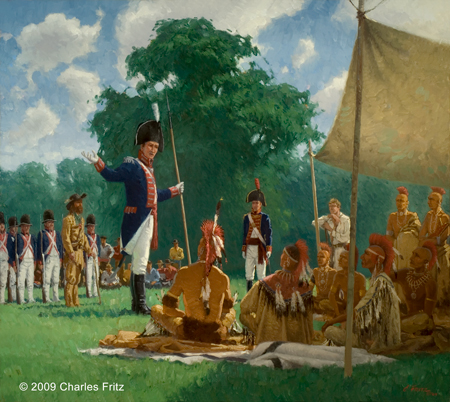Etymology
Addressing the Otos and Missouris at Council Bluffs
32″ x 36″ oil on canvas
© 2009 by Charles Fritz. Used by permission.
Jesuit missionary Jacques Gravier (1651–1708), considered to be a qualified linguist, recorded in his 1700 Dictionary of the [Algonquian] Illinois Language, that the name Missouria was derived from the Illinois word meaning ‘dugout canoe‘ which soon became to French speakers Missouria, ‘people having dugout canoes‘. A more recent interpretation refines the meaning as ‘big boat’.[1]Douglas R. Parks, Handbook of North American Indians: Plains Vol. 13, ed. Raymond J. DeMallie (Washington, D.C.: Smithsonian Institution, 2001), 461. See also The Jesuit Relations and Allied … Continue reading
War-doke-tar-tar is the captains’ spelling of the Otoe’s name for themselves. The name is often associated with watúhtana, ‘to copulate’, a meaning reinforced in popular stories. That etymology is somewhat alluring, but it has no historical basis other than folk tales. In reality, the origin of the people’s name is obscure.[2]Parks, 460.
At the time of the expedition, the nation from which the Missouri River derived its name were so reduced by smallpox and attacks from primarily the Sauks and Foxes, that they had abandoned their villages and merged with other tribes—Kansas, Osages, but primarily, the Otoes. After the merge began in the mid-1790s, the Missouria maintained their distinct identity by practicing their own clan system and customs. Today the two tribes are formally recognized as the Otoe–Missouria Tribe.
Bourgmont’s Paris Delegation
In 1725, French explorer Étienne de Veniard, Sieur de Bourgmont (1679–1734) escorted a delegation to Paris which included two Missouria chiefs, one Otoe chief, and Bourgmont’s Missouria wife. Perhaps to avoid scandal or jealousy from his French wife, Jacqueline Bouvet des Bordeaux, he had his Missouria wife baptized and then married to his co-worker, one Sergeant Dubois. In the five years prior, Bourgmont was commissioned a captain, appointed “Commander of the Missouri River,” and charged with building Fort Orleans at the mouth of the Grand River near the Missouria village Utz.[3]“Étienne de Veniard, Sieur de Bourgmont,” Wikipedia, https://en.wikipedia.org/wiki/%C3%89tienne_de_Veniard,_Sieur_de_Bourgmont, accessed 17 January 2021. The expedition noted the abandoned village as they passed on 13 June 1804. Two days later, they passed another abandoned Missouria village known today as Gumbo Point.[4]Marjorie M. Schweitzer, Handbook of North American Indians: Plains Vol. 13, 447–48.
First Council
The Lewis and Clark Expedition’s first council was with the Otoes and Missourias. Elaborate preparations preceded. In Philadelphia, Lewis started buying Indian presents. He also brought commissions, sometimes called paroles, presentation flags, and government–issued peace medals. In St. Louis, more Indian gifts were purchased, and in late April 1804, Cahokia–based merchant and fur trader John Hay helped organize and pack the diplomatic presents likely into bundles designated for specific nations. The speech was likely written previously.
The Otoe finally arrived at the expedition’s camp near present-day Fort Calhoun, Nebraska, as the sun set on 2 August 1804. The next day, the council commenced. The people were informed of the change in government and asked to abandon their allegiance and trade relationships with the Spanish and English. Chiefs were designated, given American medals and commissions, and the people were asked to be at peace with other tribes. Technological power, such as Lewis’s air gun, were demonstrated. The formula was repeated many times as the expedition traveled through the Upper Louisiana Territory.
Tradition vs Assimilation
After several treaties, land cessions, and reservations, the Otoe-Missouria split into two factions: those seeking to maintain traditional life ways and those seeking to assimilate with white society. The assimilationists had aligned with Quaker missionaries and as such were called the Quaker Band. The traditionalists were called the Coyote Band—not to be confused with the Coyote clan. The two bands would eventually rejoin as one people only to see their reservation divided into individual allotments as authorized by the Dawes Severalty Act of 1887 with later amendments. The Burke Act of 1906 authorized the Department of Interior to issue fee simple patents encourating Native American allotment owners to sell to whites. Just four years later, 78 of the 514 Otoe-Missouria allotments had been sold—15 percent.[5]Schweitzer, 457; “Dawes Act,” Wikipedia, https://en.wikipedia.org/wiki/Dawes_Act, accessed 17 January 2021.
Today, the Otoe-Missouria Nation is headquartered in Red Rock, Oklahoma with tribal jurisdiction in parts of Noble and Kay County. The tribe maintains seven secretive clans and traditional ceremonies and beliefs such as the sacred circle found in the dance ground and drum, praying to Wakanda and the four directions, and the funeral ritual and feast. They are also systematically reviving their language.[6]Otoe–Missouria Tribe of Indians, Wikipedia, https://en.wikipedia.org/wiki/Otoe%E2%80%93Missouria_Tribe_of_Indians, accessed 17 January 2021; Schweitzer, 458; “Otoe–Missouria Tribe,” … Continue reading
Selected Pages and Encounters
Too Né’s Delegation
by Joseph A. Mussulman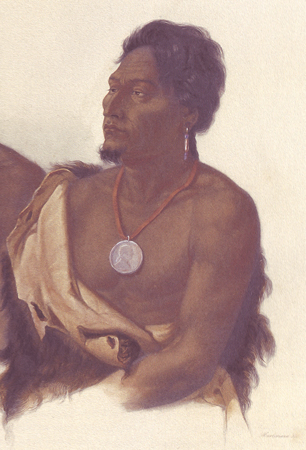

A delegation of chiefs from the Arikara, Ponca, Omaha, Otoe, Iowa, and Missouria nations sailed down the Missouri with Corporal Warfington on the expedition’s keelboat in the spring of 1805. Early in January, 1806, President Jefferson greeted them in Washington City with a formal speech.
Flag Presentations
by Joseph A. Mussulman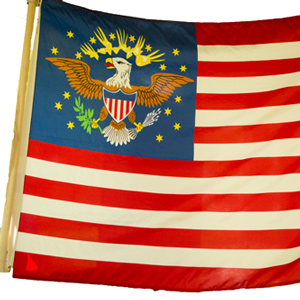

Lewis and Clark usually distributed flags at councils with the chiefs and headmen of the tribes they encountered—one flag for each tribe or independent band.
April 22, 1804
Our Missouria Indian
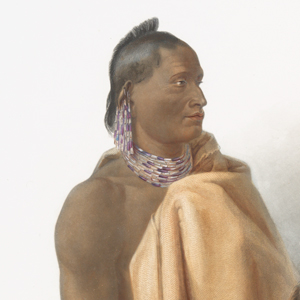

The captains are working in St. Louis with Pierre Chouteau‘s Osage delegation. An undated note says the captains have decided not to bring along a Missouria Indian that has been with them this past winter.
June 13, 1804
The mouth of the Grand


The expedition travels nine miles up the Missouri River passing sandbars, shoals, and an abandoned Missouria village. They camp at the mouth of the Grand where Clark and Lewis take lunar observations.
June 15, 1804
Dangerous Missouri river
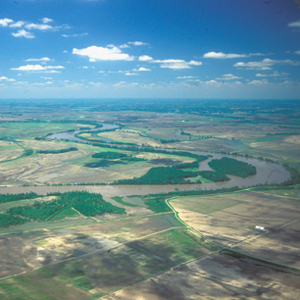

The men struggle to move the boats against the strong Missouri current with submerged logs and crumbling banks. They camp opposite old Little Osage and Missouria villages at present-day Malta Bend.
July 5, 1804
Seaman chases beavers
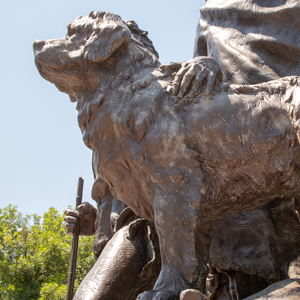

Heading up the river in present Missouri, the current turns the boats around three times, and Lewis’s dog, Seaman, drives some beavers from their house. They pass an old Fort and Missouria village.
July 11, 1804
Entering Nebraska
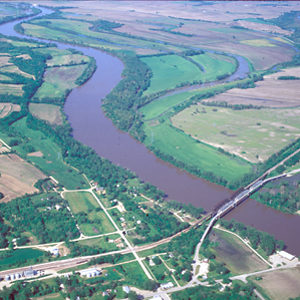

The boats make six miles up the Missouri before camping on an island at the mouth of the Big Nemaha River in present Nebraska. Clark finds a stray horse, and in Washington City, an Osage delegation arrives.
July 14, 1804
Sudden storm


When they encounter a sudden storm, the men jump into the water to save the boats. An elk is wounded, and Lewis’s dog, Seaman, joins the chase. They encamp southwest of present Langdon, Missouri.
July 20, 1804
Drouillard is sick
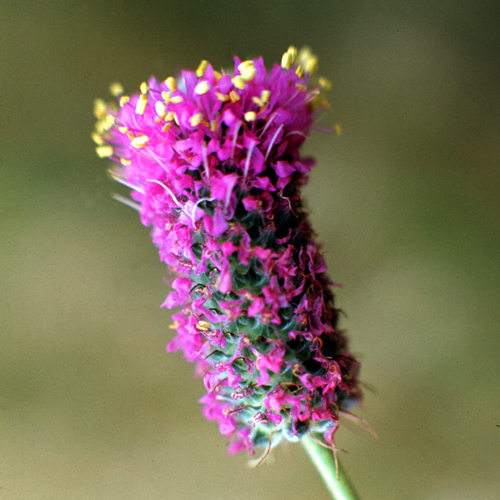
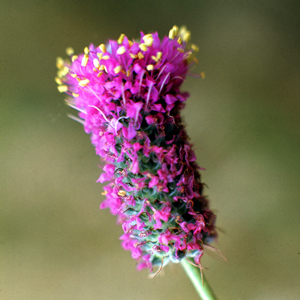
The expedition passes Water-which-Cries and Waubonsie creeks along the present Nebraska and Iowa border. Lead hunter George Drouillard is sick, and Lewis collects two specimens of clover.
July 21, 1804
Passing the Platte
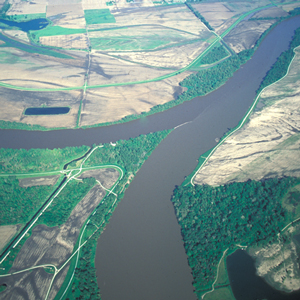

At midday, the boats arrive at the mouth of the Platte where they remark on the sandy river’s effect on the Missouri. Before continuing, the captains take a pirogue one mile up the Platte.
July 22, 1804
White Catfish Camp
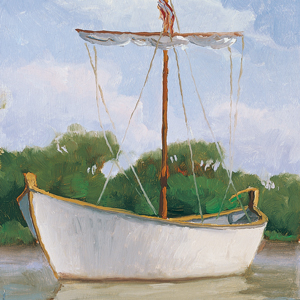

Near present Bellevue, Nebraska, the expedition sets up a camp that would be known as White Catfish Camp. The captains find a shady place near to rest and arrange a council with the Otoes.
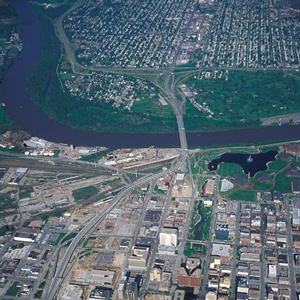

On 23 July 1803, the captains sent Drouillard and Cruzatte to an Otoe Indian village to invite the chiefs to come hear of the change of national allegiance from Spain to the United States and to learn “the wishes of our Government to Cultivate friendship with them.”
July 23, 1804
Searching for Otoes
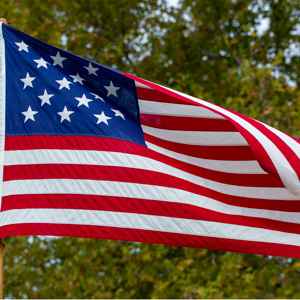

George Drouillard and Pierre Cruzatte are sent to find the Otoes and invite them to council at White Catfish Camp near present Bellevue, Nebraska. A flag is hoisted as a signal.
July 25, 1804
No Otoes
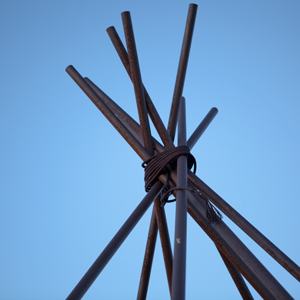

Drouillard and Cruzatte return to White Catfish Camp near present Bellevue, Nebraska without finding any Otoes. Their village was empty, and they had searched as far as the Elkhorn River.
July 27, 1804
Leaving White Catfish Camp


At White Catfish Camp, the boats are loaded, and they proceed to present Lewis and Clark Landing in Omaha, Nebraska. A knee is cut, mosquitoes rage, and Lewis adds several plants to his collection.
July 28, 1804
A Missouria visitor


Lead hunter and interpreter George Drouillard brings in a Missouria man to the evening’s camp west of present Crescent, Iowa. The captains learn that most of the Otoes are away hunting buffalo.
August 1, 1804
A botanist's field day
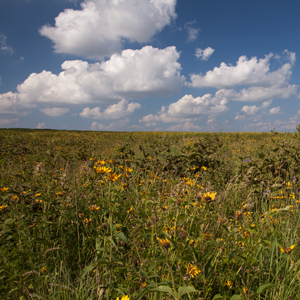

Council Bluff, Fort Atkinson, NE Clark prepares a peace pipe anticipating that the Otoes will soon arrive for a council. Two men search for lost horses and others search for the Otoes. Neither are found.
August 3, 1804
The Otoe council
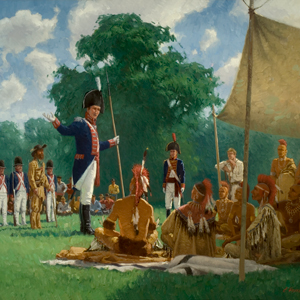

North of Fort Atkinson, NE Most of the day is spent exchanging speeches, gifts, and knowledge with the Otoes and Missourias at Council Bluff Camp in present-day Nebraska. At 3 p.m. the boats travel six miles up the Missouri.
August 17, 1804
News of Indians and deserters


Fish Camp, Homer, NE François Labiche returns ahead of Drouillard’s party and informs the captains that Indians and the deserter Moses Reed will arrive soon. A prairie fire is set as a signal to any nearby Indians.
August 18, 1804
The Omahas arrive
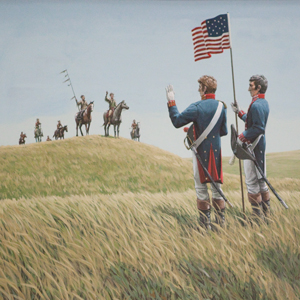

Fish Camp, Homer, NE Drouillard’s party returns deserter Moses Reed, and the Omahas arrive for a council. Reed is found guilty of desertion and receives his punishment.
August 19, 1804
Otoe's council, Floyd's illness
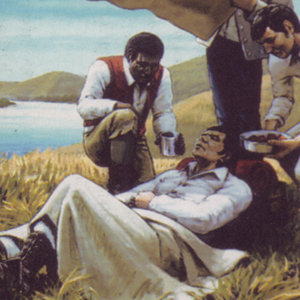

Fish Camp, Homer, NE During a council, speeches are exchanged, but the Otoes appear dissatisfied with their gifts. Sergeant Floyd becomes seriously ill requiring urgent care.
August 24, 1804
Bluffs on fire


Goat Island, NE The expedition passes a burning bluff that some call the Ionia Volcano. York kills an elk, and the captains express curiosity about a small mound in the prairie, present Spirit Mound, that the Indians fear.
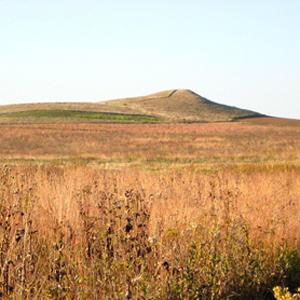

The visit to this prairie hill was among the more bizarre sidelights of the whole expedition, but evidently it was not entirely unexpected. Seventy-six years earlier, explorer Pierre La Véndrye called the place the “Dwelling of the Spirits.”
August 31, 1804
Yankton speeches
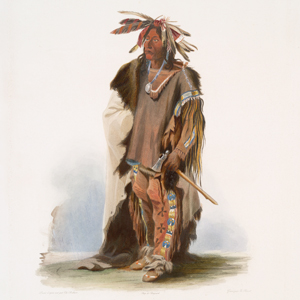

Yankton, SD In the morning, the council with the Yankton Sioux continues. Several Sioux give speeches, and Clark and Ordway take notes. Dorion is assigned a diplomatic mission and leaves with the Yanktons.
October 8, 1805
A canoe accident


Potlatch River, ID (Colters Creek) The Clearwater River has many rapids, stretches of calm, and islands inhabited by Nez Perce fishers. Travel stops after a canoe accident. In St. Louis, General Wilkinson tells of sick Indian delegates and the value of interpreter Pierre Dorion.
January 4, 1806
Jefferson's Indian speech
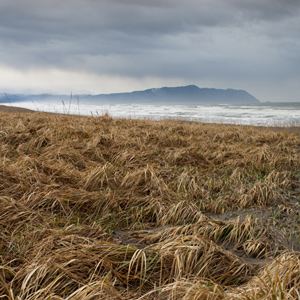

Fort Clatsop, OR Gass and Shannon travel t to the salt makers’ camp, and Lewis describes Clatsop Indian views on material goods. In Washington City, President Jefferson meets with an Indian delegation organized in part by Lewis and Clark.
September 16, 1806
A young trader
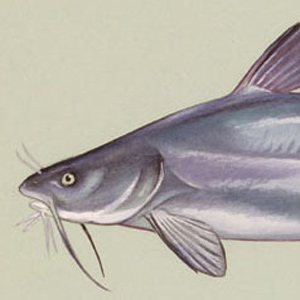

Waverly, MO The men apply the paddles and oars lightly, yet the flotilla moves fifty-two miles closer to home. They question a young trader, likely Joseph Robidoux Jr., who lacks a properly signed license.
September 20, 1806
La Charrette welcome
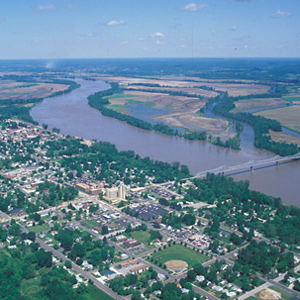

La Charrette, MO After sixty-eight miles, the expedition fires three rounds and La Charrette villagers return the welcome. Two Scottish traders from Canada feed the men their first beef since leaving. The captains see a new boat design and hear of unfavorable complications created by the Louisiana transfer.
Notes
| ↑1 | Douglas R. Parks, Handbook of North American Indians: Plains Vol. 13, ed. Raymond J. DeMallie (Washington, D.C.: Smithsonian Institution, 2001), 461. See also The Jesuit Relations and Allied Documents: Travels and Explorations of the Jesuit Missionaries in New France, 1610–1791, Reuben Gold Thwaites, ed. (Cleveland: Burrows Brothers Company, 1899), 263; Jacques Gravier, Dictionary of the [Algonquian] Illinois Language, held by the Watkinson Library, Hartford, Illinois, also available at archive.org; Michael McCafferty, “On the birthday and etymology of the placename Missouri,” Names, 51:31–45 in William Bright, Native American Placenames of the United States (Norman: University of Oklahoma Press, 2004), 290. |
|---|---|
| ↑2 | Parks, 460. |
| ↑3 | “Étienne de Veniard, Sieur de Bourgmont,” Wikipedia, https://en.wikipedia.org/wiki/%C3%89tienne_de_Veniard,_Sieur_de_Bourgmont, accessed 17 January 2021. |
| ↑4 | Marjorie M. Schweitzer, Handbook of North American Indians: Plains Vol. 13, 447–48. |
| ↑5 | Schweitzer, 457; “Dawes Act,” Wikipedia, https://en.wikipedia.org/wiki/Dawes_Act, accessed 17 January 2021. |
| ↑6 | Otoe–Missouria Tribe of Indians, Wikipedia, https://en.wikipedia.org/wiki/Otoe%E2%80%93Missouria_Tribe_of_Indians, accessed 17 January 2021; Schweitzer, 458; “Otoe–Missouria Tribe,” https://www.omtribe.org, accessed on 18 January 2021. |
